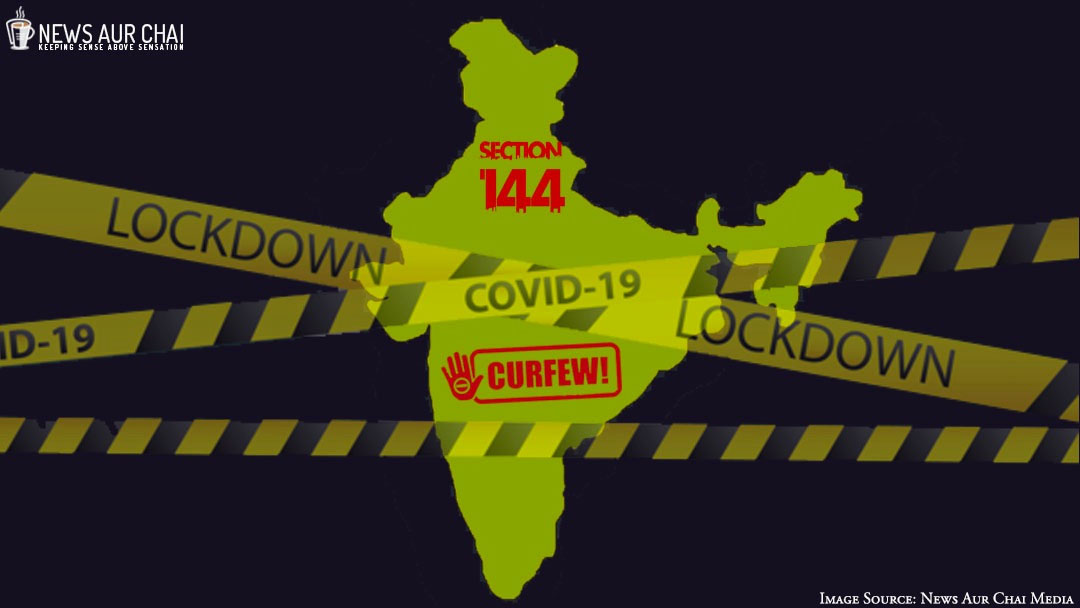
As the positive cases of coronavirus jumped in various states of the country, the Central and State governments had to enforce strict restrictions to curtail the spread.
India was brought to a standstill after Prime Minister Narendra Modi announced a nationwide lockdown since March 25. There is a lot of confusion regarding the terminology/words being used to describe the situation in different states. Each state has its own laws and is executing the measures based on the resources available.
As per Officials, lockdown and curfew are somewhat the same. However, there are a few key distinctions between how the authorities can act in each situation.
Before March 24, only a few states were put under lockdown. This means that Section 144 is imposed, but essential services are still available. In states where curfew had been declared only emergency services are allowed to operate.
What is a lockdown?
Lockdown is an emergency protocol that prevents people from leaving a given area. A full lockdown means you must stay where you are and not exit or enter a building or the given area.
A lockdown can be executed by the Collector or Chief Medical Officer in their particular area under the Epidemic Diseases Act, 1897.
When epidemic wraths, state governments under Section 2 of the Act have “power to take special measures and direct regulations as to dangerous epidemic disease”. The law was enacted because the provision in general laws like the Indian Penal Code was not sufficient to tackle the spread of fatal infection. This section gives state governments the discretional powers to mould restrictions as per the need.
This gives them the power to limit the gathering of five or more people in close quarters.
Nonetheless, essential services like hospitals, banks, ATMs, grocery stores, vegetables, and milk shops will still be open.
Under a lockdown, the police do not have the authority to arrest anyone violating it without the court’s permission. They can issue a warning and advise the people to go home.
If the person gets adversarial, the police do have the right to arrest them under Section 269 and 270 of the Indian Penal Code (IPC). If someone were to escape from quarantine, the authorities could book him under Section 271 of IPC.
What is Section 144?
Section 144 of the Criminal Procedure Code (CrPC) of 1973 authorises the Executive Magistrate of any state or territory to issue an order to prevent the assembly of four or more people in an area. As per the law, every member of such ‘unlawful assembly’ can be booked for engaging in rioting.
Section 144 restricts carrying any weapon in that specific area where it has been imposed, and people can be detained for violating it. The maximum punishment for violation is three years.
As per the order under this section, there shall be no movement of public and all educational institutions shall also remain shut. There will be a total bar on holding any public meetings or rallies during the period of operation of this order.
Furthermore, obstructing law enforcement agencies from disbanding a forbidden assembly is a punishable offence. Section 144 also empowers the authorities to block internet access.
144 CrPC prohibits the conduct of certain activities or actions or events which are allowed to be done in regular course. It is imposed to ensure the maintenance of peace and peace in an area.
What is curfew?
Curfew is when the power is with the Collector and the Police Commissioner. In addition to Section 144, all essential services will remain closed. Apart from emergency services like hospitals — banks, ATMs, grocery stores, vegetables and milk shops will all be shutdown.
Only administration and police officers are allowed on the street. Once the curfew is executed, the district administration is excluded from the action.
Difference |
Lockdown |
Curfew |
Movement |
No passes required |
Special passes required |
Essential Services |
Available |
Only Emergency services available |
Exemptions |
List of exemptions available |
Limited exemptions |
Public Gatherings |
Prevents public gatherings |
Can gather only to avail essential commodities during relaxation |
Violation |
Can lead to legal action |
Strict legal action |
Difference between Section 144 and curfew
Section 144 forbids the gathering of four or more people in the concerned area, while during the curfew, people are directed to stay indoors for a particular period. The government puts a complete restriction on traffic as well. Markets, schools, colleges and offices will remain shut under the curfew, and only essential services are allowed to run on prior notice.






One Comment